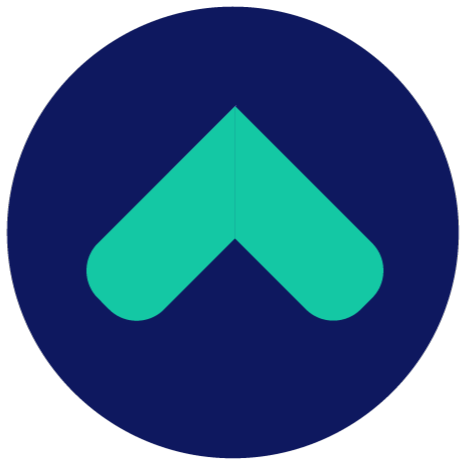At MEDDICC, we are always advocating for the use of MEDDPICC as a common language. Not just a framework or a methodology, but a common language that everyone in the Go-To-Market team can use to ensure alignment on what matters most.
That’s why we held the event: MEDDIC Playbook for Marketers – to share how marketers can use MEDDPICC to talk about things that they are already doing! These are the key takeaways.
MEDDPICC, at its core, is professional selling. It focuses on value, stakeholders, and process; what value do we deliver? To whom? And how do they buy?
The way that we think about that in context of the MEDDPICC acronym looks like this:
-
Value - Metrics, Decision Criteria, Implicate the Pain
-
What pain does your solution solve?
-
What value do your customers get from solving that pain?
-
How do you do it?
-
-
Stakeholders - Economic Buyer, Champion, Competition
-
Who is typically your Champion persona?
-
Who is typically your Economic Buyer persona?
-
Who is typically your Competition?
-
-
Process - Decision Process, Paper Process
-
What does the buying process look like?
-
How can we support the efficient acceleration of the process?
-
This lines up quite nicely with the focus for marketers: getting the right message to the right person at the right time.
The right message is all about understanding your audience and communicating the value you provide to that audience. What pain does your solution solve, and how do you solve it? This ties in with Metrics, Decision Criteria, and Implicating the Pain.
The right person is about uncovering stakeholders and discerning who your typical buyer personas are. This relates to Economic Buyer, Champion, and Competition.
The right time is decided based on the type of engagement, message and touchpoint, and the level of maturity of the customer. This means considering the Decision Process, and the Paper Process.
What is good to keep in mind at this point is the not all MEDDIC is equal – only when you treat MEDDIC as a playbook to be integrated across your GTM team at every level can you facilitate true MEDDPICC success. This brings all the elements of MEDDPICC together to allow marketing to use it effectively. For us, the MEDDICC playbook has four levels, to determine the answers to four questions:
-
MEDDICC QUALIFICATION: Do we have a champion?
-
MEDDICC METHODOLOGY: How do I build a Champion?
-
MEDDICC PROCESS: At what stage do I need a Champion?
-
MEDDICC MEASURE: What is the impact of Champions?
But enough about us. Marketers applying MEDDPICC isn’t about changing the way they work, but about bringing all the elements together to integrate seamlessly into sales activities. Let’s walk through some MEDDPICC elements to gain an understanding of how marketers can use MEDDPICC effectively.
Implicate the Pain
It doesn’t matter how good your solution is, if you can’t attach the value it brings to the customer’s pain, the engagement will lack urgency. There are three bases for pain: economic, efficiency, and people. Effective implication of pain touches on all three!
That means not only identifying the pain with your customer (Here’s your pain - economic), but indicating its impact (Here’s how much it’s costing you - efficiency) and explaining the implications of that impact (on the people!).
To keep urgency high (and shorten the time to close), it’s important to consistently implicate the pain with your customer. The pain won’t change, but they may forget how much of a negative impact it’s having on their business. This is where marketing can play a huge role! Through messaging, marketing can keep the pain implicated and keep the urgency high with the customer.
When it comes to marketing-specific activities, pain can be used in demand generation. By communicating with the sales team, marketing can find out what the customer’s pains are, and can focus on that in their messaging. In presentations, marketing can focus on the value the solution provides by focusing on that pain.
Decision Criteria
Essentially, Decision Criteria is the ‘what’ of how people make decisions. They are the things your customers look for that will inform whether or not they buy from you. They typically fall into three categories: technical, economic, and relationship. If you would like a closer look at these elements of Decision Criteria, we did a deep dive on how they can each be determined.
Understanding your customer’s Decision Criteria is essential for marketers. When we know what it is that our customers are looking for from us, we can integrate that into our demand generation campaigns for success.
Metrics
Metrics are the quantifiable measure of value that your solution provides. That includes from a revenue, efficiency, and risk perspective. Metrics can be broken down into three categories: M1s (what we’ve done before), M2s (how we will do it for you) and M3s (our mutual goals together).
M1s are a marketer’s savior! They help your customer understand what it is that your solution does with real-life, relevant, proven examples. This is while detailing the pain you solved for the customer, the implications of that pain, how you measured the impact and how your solution uniquely delivered that value.
M1s allow you to have a conversation with your customer through storytelling and reference selling, without telling them all about the things that are wrong with their company.
Champion
We know that no champion means no deal. The Champion is the person who helps to move your deal along. They must have power and influence, a vested interest, and be selling internally for you. If they do not check all three boxes, they are not a Champion.
Marketing can target Champion personas in their messaging – if the typical Champions are enablement leaders, for example, there can be a focus on why enablement leaders could benefit from your solution. Marketing can also create Champion-focused events, bringing existing and potential Champions together to connect.
Economic Buyer
The Economic Buyer is the person with the final say when it comes to buying your solution. For a deal to succeed, it’s important to know what the economic buyer cares about. Typically, they care about costs (not just price, but ROI), the time to value, and how confident their team is.
Like with champions, marketing can target Economic Buyer personas in their messaging. For instance, if the CRO is the typical Economic Buyer then marketing will know to keep CROs in mind in certain messaging. Similar to champions, marketing can set up Economic Buyer-focused events, gathering existing and potential Economic Buyers together to discuss relevant topics and connect.
Competition
We are all familiar with competition, but it’s crucial to remember that your solution isn’t just competing against the competitors you’re used to, but inertia, self-building, or other initiatives.
Marketing can focus not on why the competition is bad, but why we beat them. That keeps the message in the mind of the customer, subtly ruling out our competitors.
Decision Process
The road to rolling out your solution with a customer doesn’t only include the process itself, but the people and the timing involved. A typical Decision Process has two main facets: technical validation (does this do what we need?) and business approval (will there be ROI?).
Marketing teams can help speed along the Decision Process by sharing the Decision Criteria that differentiate your solution!
Common Language
If marketing isn’t integrated with the sales team on value and positioning, it can mean that the two teams will talk about the same thing in vastly different ways, which could result in miscommunication both internally and externally.
You could attempt to translate between the languages that you use; think: “when sales say X, they mean Y.” This is better than no integration at all, but can create more work on both sides. When you have a true common language used across teams, it helps everyone to align and focus on your value proposition and goals of the overall company. And, the more you use it, the more it empowers your team!
Ultimately, this is nothing new. We aren’t suggesting that marketing do anything they aren’t already doing - just that they use MEDDPICC elements to talk about it. When teams across organizations use one language, it increases cohesion and overall effectiveness.
If you’d like to dive more into how marketing teams can use MEDDPICC, check out this blog.





.png)





.png)
























%201.png)








.png)

.png)
.jpg)
.png)
